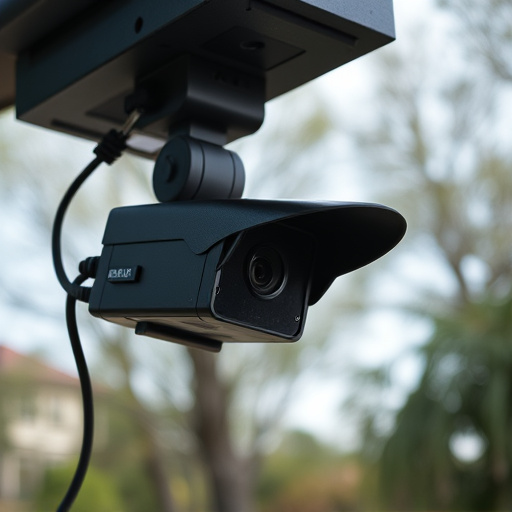Undetectable wireless security cameras, hidden in everyday objects and operating through RF signals, pose a growing concern. To combat this, advanced RF detection tools and AI algorithms are used for identification. Stay informed, employ robust security protocols, and adhere to local privacy laws (including consent and data protection) to mitigate risks and maintain trust.
Uncover the insidious world of hidden cameras with our comprehensive guide on detecting undetectable wireless security cameras. From understanding the advanced technology behind their operations, including wireless and RF functions, to exploring an arsenal of detection tools and techniques, this article is your key to navigating this modern privacy concern. We also delve into legal and ethical considerations, shedding light on best practices for a safer digital landscape.
- Understanding Hidden Camera Technology: Wireless and RF Operations
- Tools and Techniques for Detection: A Comprehensive Overview
- Identifying Undetectable Cameras: Loopholes and Countermeasures
- Legal and Ethical Considerations: Navigating Privacy Laws and Best Practices
Understanding Hidden Camera Technology: Wireless and RF Operations
Hidden camera technology has evolved significantly, with a particular focus on wireless and RF (radio frequency) operations. Undetectable wireless security cameras are now a common concern in today’s digital era. These devices operate through wireless networks, often utilizing RF signals to transmit video feeds without leaving any physical connections or cables visible. This makes them nearly invisible and incredibly hard to detect with traditional methods.
The radio frequency spectrum is used by these hidden cameras to communicate, allowing them to be placed anywhere without drawing suspicion. They can be embedded in everyday objects like clocks, smoke detectors, or even simple decorative items, making it challenging for users to identify them as surveillance devices. Understanding how these cameras operate on wireless and RF frequencies is crucial for developing effective countermeasures to detect and dismantle such covert recording systems.
Tools and Techniques for Detection: A Comprehensive Overview
In the quest to counter undetectable wireless security cameras, a range of innovative tools and techniques have emerged. These include specialized detectors that can identify radio frequency (RF) signals emitted by hidden cameras, offering a crucial layer of protection in scenarios where visual inspection is impractical or impossible. One such tool involves RF scanners, capable of scanning a wide spectrum of frequencies to pinpoint the unique signals associated with wireless cameras.
Additionally, signal analysis software plays a pivotal role by decoding and visualizing data packets transmitted by these devices. This enables experts to identify patterns and anomalies indicative of camera activity. The integration of AI algorithms further enhances detection capabilities by learning and adapting to normal RF environments, thereby distinguishing between legitimate signals and those emanating from hidden cameras.
Identifying Undetectable Cameras: Loopholes and Countermeasures
Hidden cameras, especially undetectable wireless security cameras, pose a significant challenge in today’s digital era. While advancements in technology have made it easier to detect traditional camera setups, manufacturers have developed undetectable models that slip through the cracks. These tiny cameras can be hidden in everyday objects like clocks, lightbulbs, or even paintings, making them nearly impossible to identify without specialized equipment.
To counter these loopholes, individuals and organizations must stay informed about the latest tactics. Regularly updating security protocols, employing advanced RF (radio frequency) detection tools, and staying vigilant during inspections can help mitigate the risk. Additionally, educating employees or residents on potential hiding places and promoting a culture of awareness is crucial in detecting and disabling undetectable wireless security cameras effectively.
Legal and Ethical Considerations: Navigating Privacy Laws and Best Practices
When dealing with undetectable wireless security cameras, legal and ethical considerations are paramount. The use of such devices raises complex privacy issues, as they can capture images and videos without individuals being aware of their surveillance. It’s crucial to understand the privacy laws in your jurisdiction that govern the installation and operation of hidden cameras. Many countries have strict regulations protecting citizens’ privacy, with restrictions on where and how surveillance technology can be deployed.
Navigating these legal parameters is essential for both individuals and organizations to ensure they are not infringing on anyone’s rights. Best practices include obtaining explicit consent before installing any form of surveillance, clearly marking the presence of cameras, and adhering to data protection guidelines regarding the storage and handling of collected information. Respecting privacy rights not only avoids legal repercussions but also fosters a sense of trust and security within communities.
In the ever-evolving landscape of surveillance technology, understanding how to detect hidden cameras, especially undetectable wireless security cameras, is paramount for maintaining privacy and security. This guide has navigated through the complexities of hidden camera technology, from wireless and RF operations to legal and ethical considerations. By equipping readers with the knowledge of tools and techniques for detection, as well as countermeasures against loopholes, we aim to empower individuals to protect their personal spaces and data in today’s digital age. Staying informed about these matters is crucial for fostering a secure environment and respecting privacy laws.
